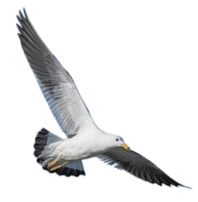 The pilot and the plane are breaking through the sound barrier. You need to break through a barrier too, and it may not be what you think it is. (*pix)
The pilot and the plane are breaking through the sound barrier. You need to break through a barrier too, and it may not be what you think it is. (*pix) A goal of recovery is freedom. You want to live without being dominated from within by eating disorder cravings, rigid thinking, body obsession, bouts of overwhelming fear and overwhelming rage. You believe that these qualities of your life, by their absence, release you to a life of freedom and feelings of well being.
This is almost and not quite the reality of recovery experience. I think most of you know that these feelings and your actions based on these feelings are defenses that protect you from something else, deeper, out of conscious awareness. You can't talk or even think about what's out of conscious awareness because whatever it is, it's out of sight.
But what we can see at in that list of dominators that is key to freedom is rigid thinking. Horsemasters put blinders on horses who work the streets of New York or march in parades. Or at least they used it. Horses are prey animals. Like all prey animals they have big eyes and a broad range for their peripheral vision. They need this to be on the lookout for predators and other dangers.
The blinders block their periphery. What they can't see won't disturb them.
Sound familiar? I am not suggesting that you give up all your protections to experience fear. I doubt that you could, even if you tried. We establish protections for a reason. However, as we age, grow, learn and gain experience we may be protecting ourselves from fears we've outgrown.
We protect ourselves through habit with our rigid thinking. I'm bad at math. I can't draw. I could never be a public speaker. I can't write. Such rigid boundaries that you've established and honored all your life may be defenses. They may be blocks because something exists for you on the other side of those blocks. That something may be what you couldn't tolerate in the past but now, perhaps, you can. That something may be where you would face criticism and even danger but where you won't now. Or if you do, you have evolved enough to take care of yourself and deal with it.
My personal example from just this week: "I can't read graphs well." I don't understand graphs unless they are very basic and simple. I certainly cannot create graphs. I most certainly cannot create graphs that simplify a complex idea or experience. I'm a writer. I use words to get my meaning across.
That rigid definition of my abilities and nature is in the process of being dismantled, much to my surprise. If I can read and create graphs, what will that mean to my definition of myself and my abilities in this world? What will it mean to how and how I communicate? What will it means to my audience? Will I become free to communicate ideas, processes and experiences I could not articulate before?
Here's what happened. I'm taking a UCLA class in the Principles of Sustainability. I stretched into a realm I care about but know little about except that I recycle and fear from the growing poisons and disregard for living systems that is destroying the earth as a habitat for life. So yes, I'm passionate about the topic while being uninformed.
My last homework assignment, still in process, is to follow the making of a Crayola crayon, from trees and petroleum based wax, pigment and clay through the manufacturing path, packaging and delivery to use and end disposal. Then I am to describe the impact each phase has on the environment. Okay. It took me a lot of time to find out all that information. Yes, I can see the impact
of the various phases on communities, environment, individual workers, and air and water quality.
But the last phase of my assignment is to put all this information into a one page graph and send it to my teacher Arghhh! I can't do that. This course means a lot to me and I can't do it. "Oh, I can try." I thought. Surely the Internet has put up something simple where I can just fill in premade boxes."
I looked. That doesn't exist, at least for my project requirements. I was frozen in place. I tried many sites. I didn't understand the instructions. I couldn't move boxes. I couldn't couldn't couldn't. I am accustomed to being competent and was terribly humbled by my hitting a wall where I could think of no options except retreat and surrender.
What I couldn't do was get past my rigid thinking about my identity as someone who could make graphs. I thought I might have to give up the class. I thought well, maybe I could get a tutor. I love this class.
Finally, like an eating disorder person who gives up and lets herself finally call a therapist for help, I called my teacher. I was vulnerable and on the edge of collapse, i.e. something was collapsing. I told her I couldn't go beyond where I was. I didn't know how. The power point cards I sent her are an indication of my deficiencies. It was the first time I had ever used power point, and it was not easy for me. Do I need a tutor? Will I be able to complete this class?
To my surprise she said I didn't need a tutor and that I was on the right track. She said she'd walk me through PowerPoint but I could try piktochart.com first.
Reassured and venturing into new territory armed with my teacher's support I explored piktograph and discovered Ted talks about the visual power of condensing complex information into graphic presentations. These wonderful geeks were talking poetry. "The Beauty of Data", by David McCandless "The Weight of Data" by Jer Thorp. Break down something complex into short visual components of a beautiful pattern. Make each little bit hold lots of information. Connect it all to the human experience. Give people an opportunity to see what they couldn't see before and understand what they couldn't understand before through graphics. With the information explosion all around us we need this kind of assistance to be able to think about and make important decisions in this complex world.
I got it. I'm moving past my block. My rigid thinking did collapse. Can I do it? Not yet. But I'm certain now I can learn to do it. I didn't have that certainty before. Will being able to do it make a difference in my life? Probably. Do I know what that is? No. Am I ready for it? Yes. Does this feel good? Oh, yes!
So what is the take home lesson?
1 Follow your heart
2. If your heart leads you to stretch into a new world, then stretch.
3. Know that learning something new means you didn't know it before and probably didn't know how to know it till now.
4. Meet your rigidity head on (as if you could possible meet it any other way.)
5. Stay present when pain, alarm and defeat strike.
6. Plot alternative paths AND ask for help
7. Take in the help and set forth again
It's your heart you are following. It might feel like the hitting of walls, the suffering, the new self definition, the humility and the support of a more experienced person who knows the territory is what is getting you through. But really, you are back to step one. You are following your heart and your heart will find a way.
Now I'm going back to my homework. I will create a graphic design today as I think of poetry and the human experience using graphic tools. My identity now includes the statement, I'm a person who reads, creates and values graphs.
What are your negative definitions of yourself that you protect with rigid thinking?
How can you challenge them?
What do you care about that requires you to break through that rigidity?
It's fun to find out. I'm feeling quite light hearted as I head back t my assignment. I'd like to share this feeling with you. Please let me know if you know about it or are willing to find out about it.
It's a kind of joy.
P.S. It's now 12:30 a.m. I got it done! It's sent to my teacher only 24 hours late. Here's the url. My infograph is flawed, clumsy and crammed, and I'm so pleased I did it. Surely I'll be more competent when I do my next one. :). Tired, but feeling great. I don't know why the title didn't come through. It's called: Life Cycle Analysis of Crayola Crayon.
*pix
Yokosuka, Japan (Mar. 23, 2005) - An F/A-18C Super Hornet from Strike Fighter Squadron Two Seven (VFA-27) breaks the sound barrier during an air power demonstration conducted by Carrier Air Wing Five (CVW-5) and USS Kitty Hawk (CV 63). Currently participating in the annual exercise Foal Eagle, Kitty Hawk and CVW-5 demonstrate their commitment to the Republic of Korea/U.S. alliance through joint training. Under way in the 7th Fleet area of responsibility (AOR), Kitty Hawk demonstrates power projection and sea control as the U.S. Navy's only permanently forward-deployed aircraft carrier, operating from Yokosuka, Japan. U.S. Navy photo by Photographer's Mate 3rd Class Bo Flannigan (RELEASED)


Add comment